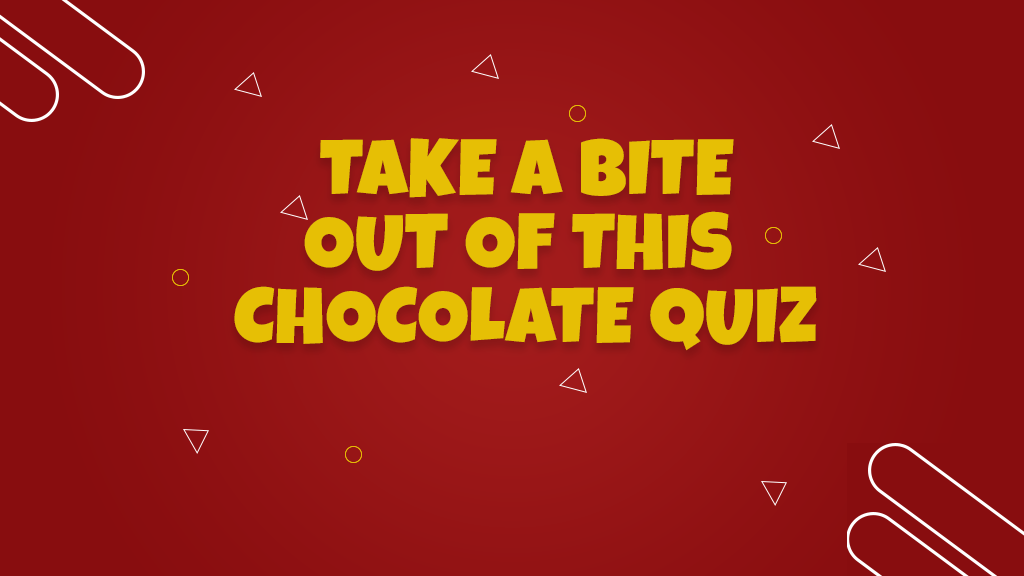❤️It's Trivia, but Sweeter❤️
Take a Bite Out of This Chocolate Quiz

Chocolate is a global favorite, cherished in various forms, from the rich bitterness of dark chocolate to the creamy sweetness of milk and white chocolates. But how well do you know chocolate’s history, ingredients, and the process behind its creation? Let’s dive into the world of chocolate, exploring its origins, types, and fascinating journey from farm to factory.
Origins of Chocolate
Chocolate’s story begins in ancient Mesoamerica, where the Olmecs, Mayans, and Aztecs cultivated cacao, using the beans for both food and currency. They consumed cacao as a bitter drink, often spiced with chili and vanilla. The Spanish brought cacao back to Europe, where it was sweetened with sugar, leading to the chocolate we recognize today.
From Cacao to Chocolate
Cacao trees thrive in tropical climates, particularly in West Africa, South America, and Southeast Asia. The chocolate-making process starts with harvesting cacao pods and extracting the beans. After fermentation and drying, the beans are roasted, cracked, and ground into cocoa mass, which consists of both cocoa solids and cocoa butter.
These key ingredients are blended, depending on the type of chocolate being made. Dark chocolate contains a high percentage of cocoa solids, while milk chocolate includes milk powder and sugar. Once refined, the chocolate mixture is tempered and cooled into molds for distribution.
Types of Chocolate
Chocolate comes in three main forms:
- Dark Chocolate: Made from cocoa solids, cocoa butter, and sugar, dark chocolate has an intense flavor and higher cocoa content. It’s often considered the healthiest option, as it’s rich in antioxidants and has less sugar than milk chocolate.
- Milk Chocolate: This is the most popular variety, containing milk powder, sugar, and cocoa solids. The result is a creamy, sweet taste, perfect for everyday snacks and desserts.
- White Chocolate: Unlike dark and milk chocolates, white chocolate contains cocoa butter but no cocoa solids, giving it a creamy texture and a milder, sweeter flavor.
Cocoa’s Economic Role
Cocoa is a vital crop in countries like the Ivory Coast, Ghana, and Indonesia. It’s a key export for these regions, where millions of farmers rely on cacao cultivation for their livelihoods. The global demand for chocolate has brought attention to issues such as fair trade and sustainability. Many companies are working to ensure responsible sourcing and fair compensation for farmers.
Chocolate Innovations
Over the years, chocolate brands like Mars, Hershey’s, and Nestlé have introduced a variety of chocolate products, from Snickers bars to M&M’s. The chocolate industry continues to innovate, offering new flavors, fillings, and textures that appeal to different tastes.
Luxury chocolatiers focus on high-quality, artisanal chocolate, often made with rare cocoa varieties. These premium chocolates are known for their complex flavors and superior craftsmanship, providing an indulgent experience for connoisseurs.
Chocolate’s Cultural Significance
Chocolate plays a central role in global celebrations and traditions. It symbolizes love and indulgence, making it a popular gift for holidays like Valentine’s Day and Easter. Additionally, chocolate has become an essential ingredient in baking, drinks, and gourmet cooking.
The Future of Chocolate
As chocolate consumption grows worldwide, the industry faces challenges such as climate change and sustainability. Cocoa production is vulnerable to weather patterns, which affect supply. To combat this, many chocolate companies are investing in sustainable farming practices and exploring alternatives, such as plant-based or sugar-free options, to meet consumer demands.
Conclusion
From ancient Mesoamerican cultures to modern-day indulgences, chocolate has a rich history and a wide appeal. Its journey from cacao bean to chocolate bar is a fascinating process, and its versatility in flavor and form ensures it remains a beloved treat across cultures. Whether you enjoy dark, milk, or white chocolate, there’s always more to learn and savor about this iconic food.



